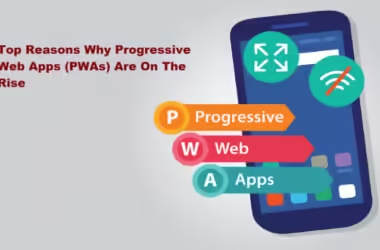Working remotely from home has become a constant reality for many of us in the workforce due to the COVID-19 pandemic, so having reliable internet at home is no longer merely for keeping in touch with family and friends or being entertained.
The worst thing that may happen to you in your day is slow internet! You should get the speed you paid for in your subscription. Fortunately, it is easy to resolve this issue in minutes. You only need to know what’s causing the problem by troubleshooting it.
This article will share 6 of the best strategies to deal with a slow internet connection; keep reading to find out.
Examine Your Internet Plan and Speed
Most of the time, your slow internet connection is because you pay for a poor connection. Half of all Americans have no idea what insurance plan they have or how much it costs.
So, if you’re having trouble with your internet speed, go to your provider’s website. Find out what kind of package you have by calling their customer service department! You are capable.
Repair Wi-Fi Signals
You could have realized that the router and wired connections are flawless, but your Wi-Fi connection is slow. A slight difference in performance between a wired and wireless connection to the internet is expected, but a significant difference indicates a weak Wi-Fi connection.
There are several ways to increase your internet speed, but perhaps the most frequent is to reset your router to factory settings. You might have to repeat the installation procedure, but the quicker internet connection is worth it, right?
Disable bandwidth-hogging apps
If your hardware, software, and network are all in good working order, you should see if any applications or files are consuming too much bandwidth. For example, if you’re downloading something via Torrent, you can encounter some internet lag.
By default, most VPN services encrypt and tunnel online activity from all apps and software on your device. Your connection speed will normally be poor if you are using many apps that demand a lot of traffic.
For instance, it is easy to change region at LG Smart TV by using VPN when the connection is fast in order to have access to geo-restricted content. Fortunately, most VPN companies include a feature that allows you to choose which sites, apps, and networks you want to access through the VPN and which you want to access directly.
Split tunnelling is the term for this technique. Installing extensions such as Ad Blocker will also prevent files from consuming unneeded bandwidth.
Contact your Internet Service Provider
The service provider ultimately determines the speed of the internet. Your ISP’s network setup may change, or technical difficulties may occur, causing your internet connection to slow down inadvertently. ISPs may also add network filters or controls that reduce network performance.
If you feel your service provider is to blame for your poor internet connection, do not hesitate to ask them.
Check to See If Your Network Is Slow
Run speed tests to evaluate the quality of your internet connection regularly. These tests determine whether or not your local computer’s outbound connection is working correctly.
Receive a good result on a speed test, but your computer’s internet connection is still poor. The issue could be with your laptop. for example, active download sessions or maxing out your device’s memory, disk, or CPU). If your computer’s system memory, disk input/output, or CPU cycling utilization is consistently above 80%,
it may struggle to maintain optimal performance. Slowdowns in the network occur because the computer is overworked, not because of the network.
Prioritize your Needs
What would you do if your internet connection was slow and could not be fixed immediately? First, categorize the jobs that can and cannot be completed with a slow internet connection.
Complete the chores that don’t take a lot of bandwidth first, and then finish the rest once you have access to high-speed internet.
Know the limits of your hardware
A limitation exists in every router. It means that routers have a limited output speed and can only connect to several devices at once. If you buy a gigabit plan (1000 Mbps) but your router can’t handle it, you won’t get the speeds you deserve.
Your internet connection will reach its maximum speed of 500 Mbps or whatever it is set. It also works in the reverse direction. If you have the most up-to-date router but your connected devices are outdated. You will not have access to optimal internet speeds.
Conclusion
Nothing can stop you from watching high-resolution videos on YouTube or Netflix at full blast while you work now that you know why your network slows down and how to fix it. While the situation may have been mysterious at first, hopefully, this article clarified things.










